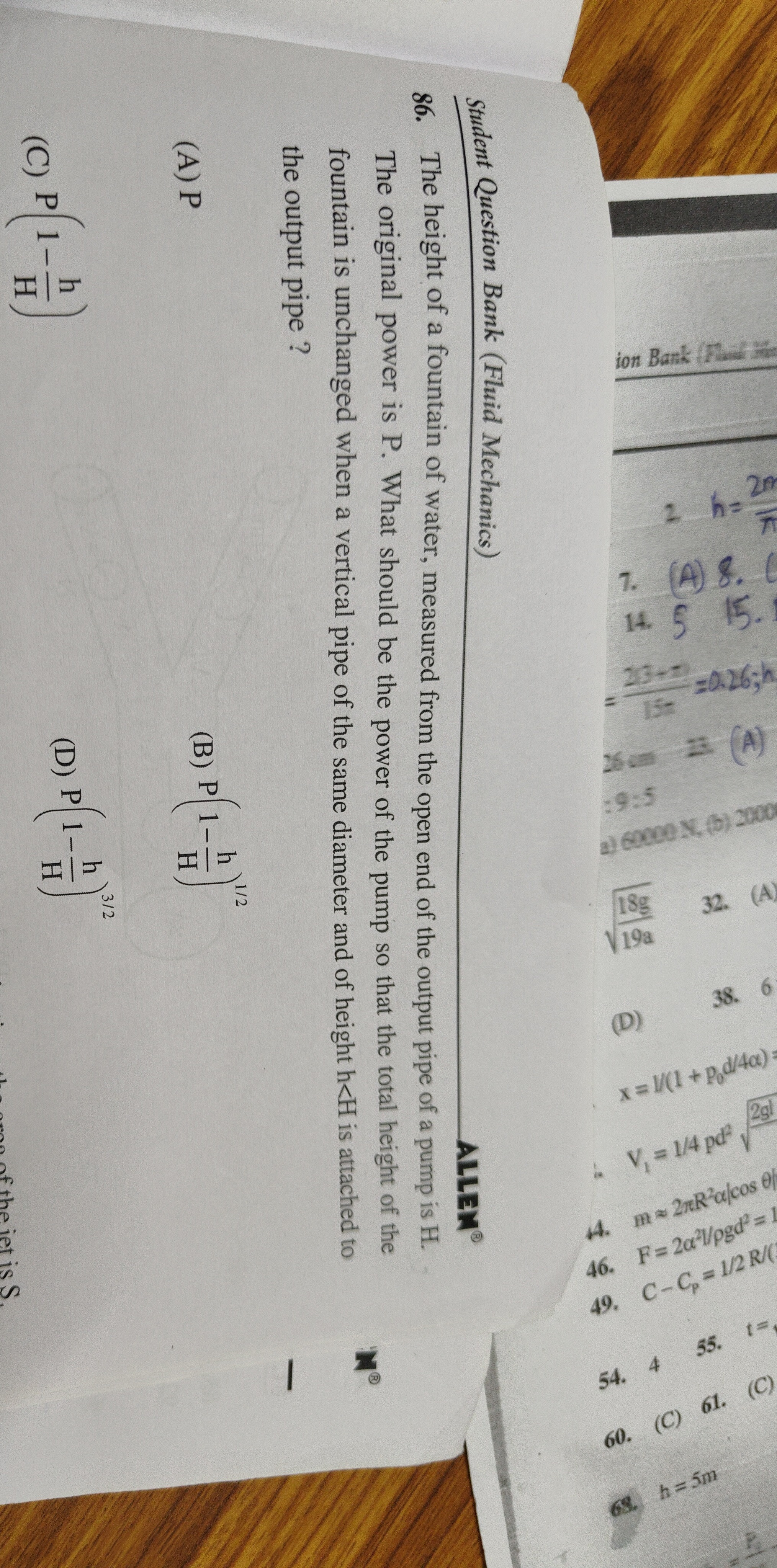Question
Question: The height of a fountain of water, measured from the open end of the output pipe of a pump is H. The...
The height of a fountain of water, measured from the open end of the output pipe of a pump is H. The original power is P. What should be the power of the pump so that the total height of the fountain is unchanged when a vertical pipe of the same diameter and of height h<H is attached to the output pipe ?

P
P(1−Hh)1/2
P(1−Hh)
P(1−Hh)3/2
P(1-Hh)
Solution
Let m′ be the mass flow rate. In the original setup, power P is delivered to achieve height H. Assuming power is proportional to kinetic energy, P∝21mv12, and to reach height H, 21v12=gH. Thus, P=m′gH (if power is energy per unit time, and m′ is mass flow rate, P=m′×21v12=m′gH).
When a pipe of height h is attached, the water must reach a total height H. Let the velocity at the exit of the pipe (at height h) be v2. The total energy per unit mass required to reach H is gH. This energy is provided by the pump as kinetic energy and potential energy gained up to height h: 21v22+gh=gH. This means the required kinetic energy per unit mass is 21v22=g(H−h).
The new power, Pnew, is assumed to be proportional to this new kinetic energy: Pnew=m′21v22. Substituting the value of 21v22: Pnew=m′g(H−h).
Comparing with the original power P=m′gH, we get: Pnew=PHH−h=P(1−Hh).
